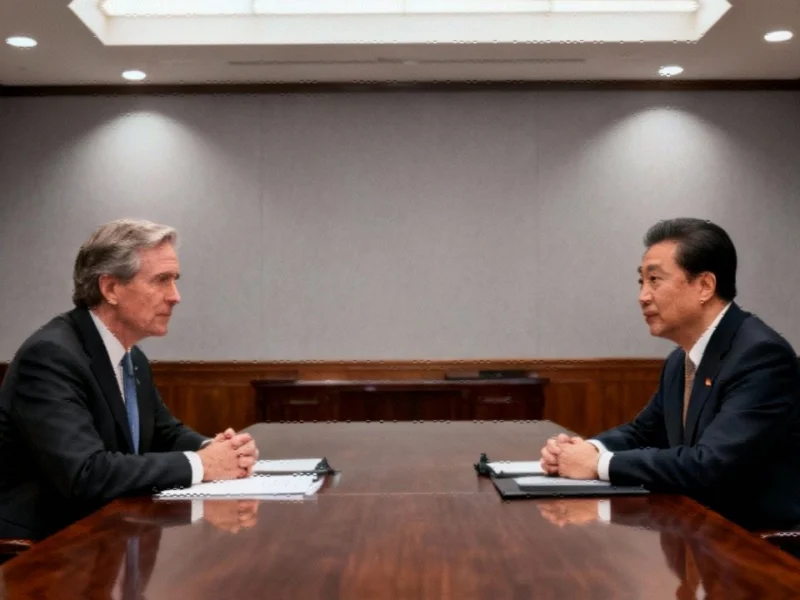High-Stakes Trade Talks Scheduled in Malaysia
US Treasury Secretary Scott Bessent and Chinese Vice Premier He Lifeng will meet in Malaysia next week in an effort to de-escalate trade tensions between the world’s two largest economies, according to official announcements from both governments. The in-person meeting follows what both sides described as frank discussions during a Friday video call, with sources indicating the officials addressed the unsustainable nature of current trade restrictions.
Impending Deadline Looms Over Negotiations
The upcoming Malaysia meeting represents a critical juncture in US-China trade relations, with existing agreements set to expire on November 10. Analysts suggest the timing is particularly urgent given President Donald Trump’s threatened additional 100% tariff on Chinese imports starting November 1 unless Beijing removes recently implemented export restrictions on rare-earth minerals and magnets. The report states that previous negotiations between Bessent and He across four European cities over six months had successfully reduced duties from triple-digit levels for both nations.
Strategic Venue Selection
The choice of Malaysia as the meeting location appears strategically significant, according to trade analysts familiar with the region. Malaysia represents a Southeast Asian exporter that maintains substantial trade relationships with both economic powers while currently facing a 19% US duty on its goods. Additionally, the country’s semiconductor and electronics industries face potential 100% tariffs under an ongoing national security trade review, creating what observers describe as a complex backdrop for the negotiations.
Conflicting Public Statements
Public statements from both governments reveal the delicate diplomatic balancing act underway. Bessent stated on social media platform X that the two officials had “engaged in frank and detailed discussions regarding trade between the United States and China,” while China’s Xinhua news agency reported the conversation included “candid, in-depth, and constructive discussions on major issues in bilateral economic and trade relations.” Both accounts reportedly confirmed agreement to hold a new round of trade talks as soon as possible.
Broader Economic Context
The US-China trade discussions occur against a backdrop of global economic uncertainty and shifting supply chain dynamics. Recent industry developments in corporate governance and ongoing technology sector realignments have complicated international trade relationships. Meanwhile, related innovations in medical technology and emerging market trends in artificial intelligence applications represent additional dimensions in the complex US-China economic relationship. The position of Vice Premier of the People’s Republic of China carries significant responsibility in managing these multifaceted trade discussions.
Resource Control Implications
At the heart of the current dispute lies China’s export restrictions on rare-earth minerals, which are critical components in electronics, renewable energy technologies, and defense applications. According to trade experts, these restrictions have triggered concerns about supply chain security and resource dependency. The situation reflects broader geopolitical considerations surrounding critical materials, with both nations reportedly maneuvering to secure strategic advantages in key technological sectors.
Potential Outcomes and Market Implications
While neither side has disclosed specific negotiation positions, trade analysts suggest several potential scenarios could emerge from the Malaysia meeting. Sources indicate that temporary extensions of existing agreements remain possible, though comprehensive resolution of the rare-earth dispute appears less likely given the strategic importance both nations attach to these resources. Market observers are reportedly monitoring the situation closely for indications of how the broader US-China economic relationship might evolve in the coming months.
This article aggregates information from publicly available sources. All trademarks and copyrights belong to their respective owners.
Note: Featured image is for illustrative purposes only and does not represent any specific product, service, or entity mentioned in this article.



